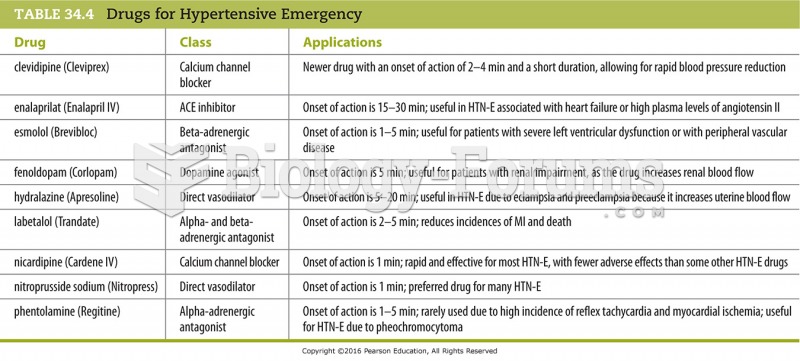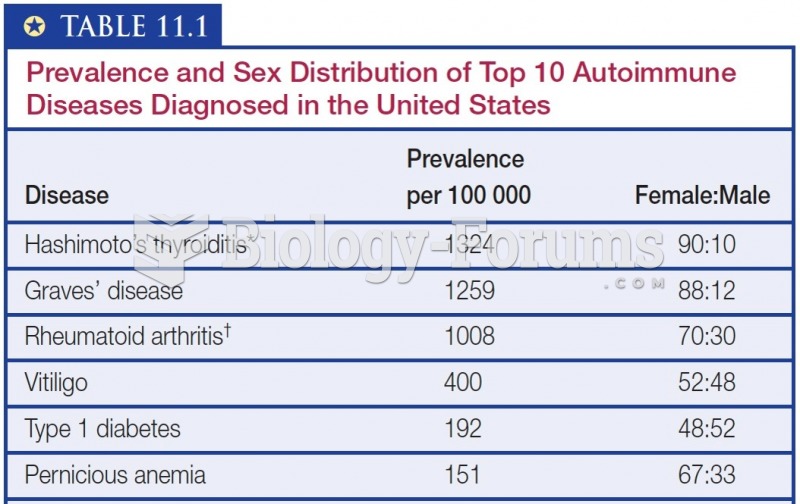|
|
|
Cancer has been around as long as humankind, but only in the second half of the twentieth century did the number of cancer cases explode.
Pubic lice (crabs) are usually spread through sexual contact. You cannot catch them by using a public toilet.
The Centers for Disease Control and Prevention has released reports detailing the deaths of infants (younger than 1 year of age) who died after being given cold and cough medications. This underscores the importance of educating parents that children younger than 2 years of age should never be given over-the-counter cold and cough medications without consulting their physicians.
Cytomegalovirus affects nearly the same amount of newborns every year as Down syndrome.
There are over 65,000 known species of protozoa. About 10,000 species are parasitic.







